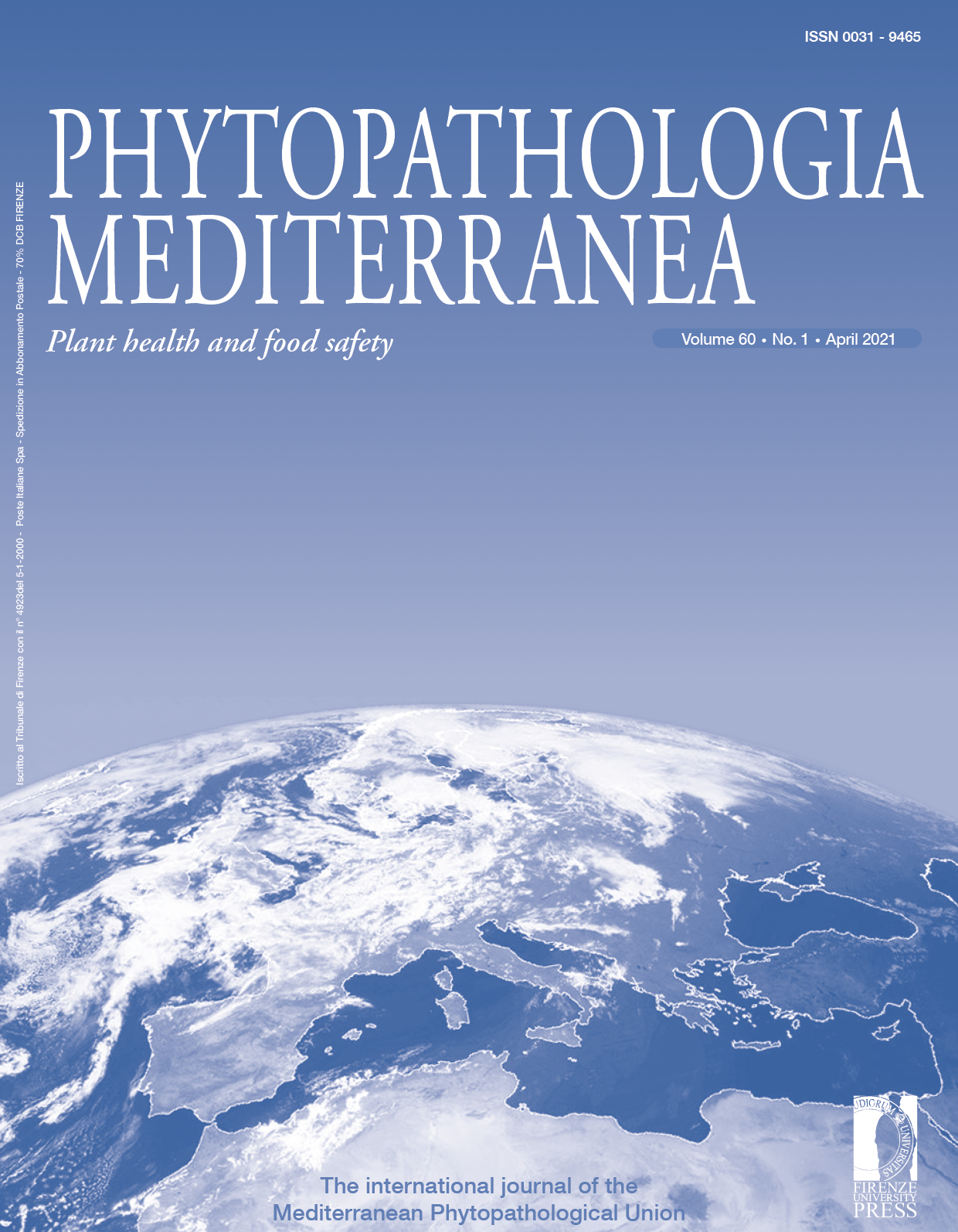Published 2021-05-13
Keywords
- Cucurbita moschata,
- pathogen,
- phylogeny,
- RFLP
How to Cite
Funding data
-
Inner Mongolia Agricultural University
Grant numbers NDYB2018-3
Abstract
Pumpkin plants showing symptoms of witches’ broom (PuWB) were observed in Xinjiang Uyghur autonomous region, China, in September 2018. A phytoplasma was detected in symptomatic plants by PCR amplifying portions of the 16S ribosomal and tuf genes. In addition, the phylogeny based on these genes sequencing indicated that the PuWB strain clusters with ‘Candidatus Phytoplasma solani’ (subgroup 16SrXII-A). Furthermore, based on in silico and in vitro restriction fragment length polymorphism analyses, the PuWB phytoplasma was confirmed as a ‘Ca. P. solani’-related strain. This was the first record of the occurrence of phytoplasma presence in pumpkins in China, and the first record of 16SrXII phytoplasma infecting pumpkins in the world.






